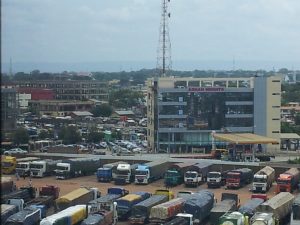The DHL Global Connectedness Index for 2016 is already out. My colleague at IESE Business School Pankaj Ghemawat and his research team are responsible for the index. The index measures how globalized countries are by analyzing the depth of the international interactions, the breadth of their geographic distribution and their directionality, outwards or inwards. We already discussed in this blog the previous report published two years ago, Global connectedness index of African countries. Before analyzing sub-Saharan Africa (SSA) in more detail, let’s highlight some stylized facts about this year’s ranking relative to 2014:
- The Netherlands still ranks number 1 with a score of 91 out of 100.
- The new least connected country is Burundi (ranked 140 with a score of 8 out of 100) – Syrian Arab Republic occupied this position in 2014 but it’s no longer included.
- USA: still ranks 27, with a score of 64.
- Spain: upgrades one position and now ranks 24, with a score of 67.
| COUNTRY | RANK 2016 | RANK 2014 | COUNTRY | RANK 2016 | RANK 2014 |
| Mauritius | 41 | 46 | Botswana | 117 | 126 |
| South Africa | 47 | 54 | Namibia | 119 | 116 |
| D. R. of Congo | 66 | 53 | Benin | 121 | 136 |
| Ghana | 79 | 55 | Zambia | 122 | 129 |
| Nigeria | 95 | 38 | Cameroon | 127 | 115 |
| Angola | 97 | 94 | Uganda | 129 | 121 |
| Madagascar | 98 | 103 | Zimbabwe | 130 | 122 |
| The Gambia | 101 | 110 | Niger | 131 | 132 |
| Senegal | 103 | 112 | Burkina Faso | 135 | 128 |
| Kenya | 105 | 106 | Rwanda | 136 | 133 |
| Ethiopia | 106 | 85 | Mali | 138 | 117 |
| Ivory Coast | 109 | 78 | Burundi | 140 | 137 |
| Mozambique | 113 | 98 |
Source: DHL Global Connectedness Index
Africa is still the least connected continent in the world, and the SSA region has gone down overall: 15 countries fell in the ranking while only 10 advanced. In the last report there were 9 sub-Saharan countries among the Top-100 (10 if we include Gabon that is no longer considered for the 2016 rankings) and now there are only 7.
The case of Nigeria is of particular interest. It fell from the 38th position to the 95th in only two years. This was driven primarily by the merchandising trade category: exports fell from 35% of GDP to only 10%, and imports from 20% to 10%. Slumping oil prices presumably played a role in shifting both the composition and the geographic distribution of Nigeria’s merchandise exports.
Other countries that fell notably in the rankings are: Democratic Republic of Congo, Ghana, Ethiopia, Ivory Coast, Mozambique and Mali.

On the other hand, the following countries advanced in the overall rankings:
- Mauritius has replaced Nigeria in leading the group of SSA countries. This advance comes especially from the depth dimension and particularly from the capital market, experiencing an important increase in the portfolio equity exports.
- South Africa is now ranked among the Top-50 due to better information figures. The category internet bandwidth, measured with bits per second per internet users went up from 3,720 to 147,630. International phone calls received in the country also increased remarkably.
- Benin advanced 15 positions because of the improvements in the trade category. Merchandise trade exports went up from 14% of GDP to 24%, and merchandise trade imports rose from 26% to 36%.
Any thoughts on these ranks or scores?
Nadim Elayan, Research Assistant at IESE Business School, collaborated in this article.
__________________________________________________________________________
RELATED POSTS:


Iran Where is the research?
Hi,
Thanks for sharing a valuable information about Global Connectedness Index updated rankings.
What about Germany?
You may find the report here: http://www.dhl.com/en/about_us/logistics_insights/studies_research/global_connectedness_index/global_connectedness_index.html
It contains information about virtually any country. Germany ranks #7.
Mauritius has shown significant growth in terms of global connectedness. Well researched data!!